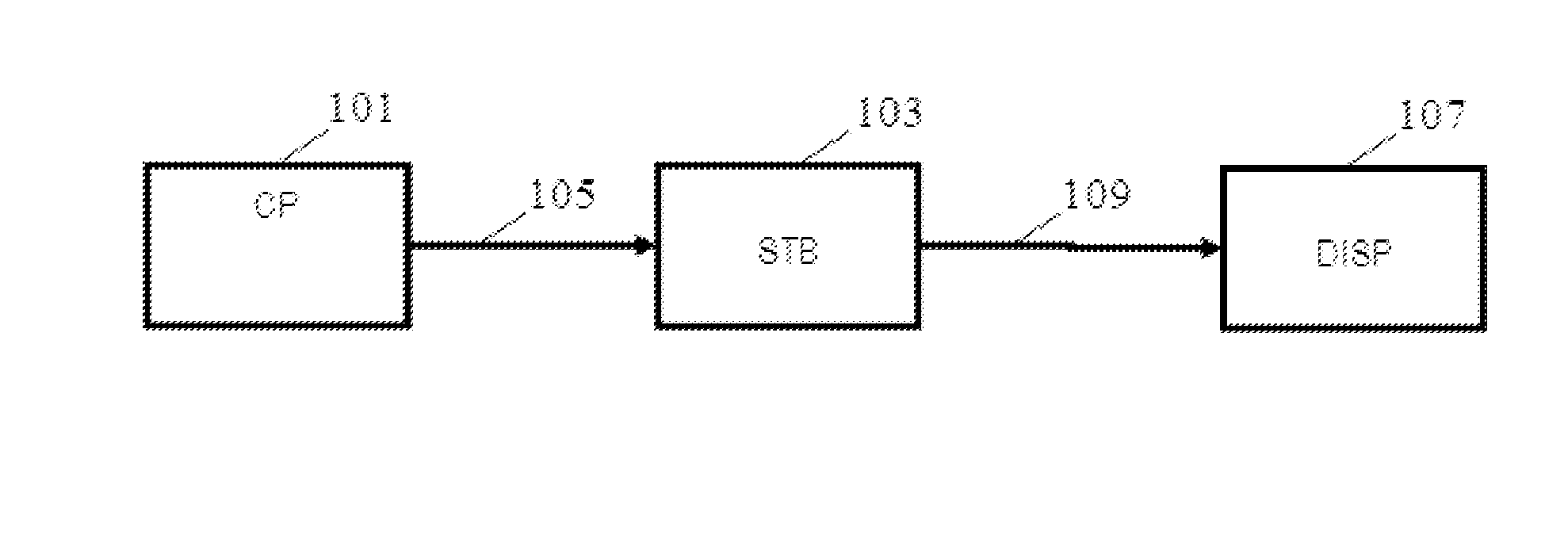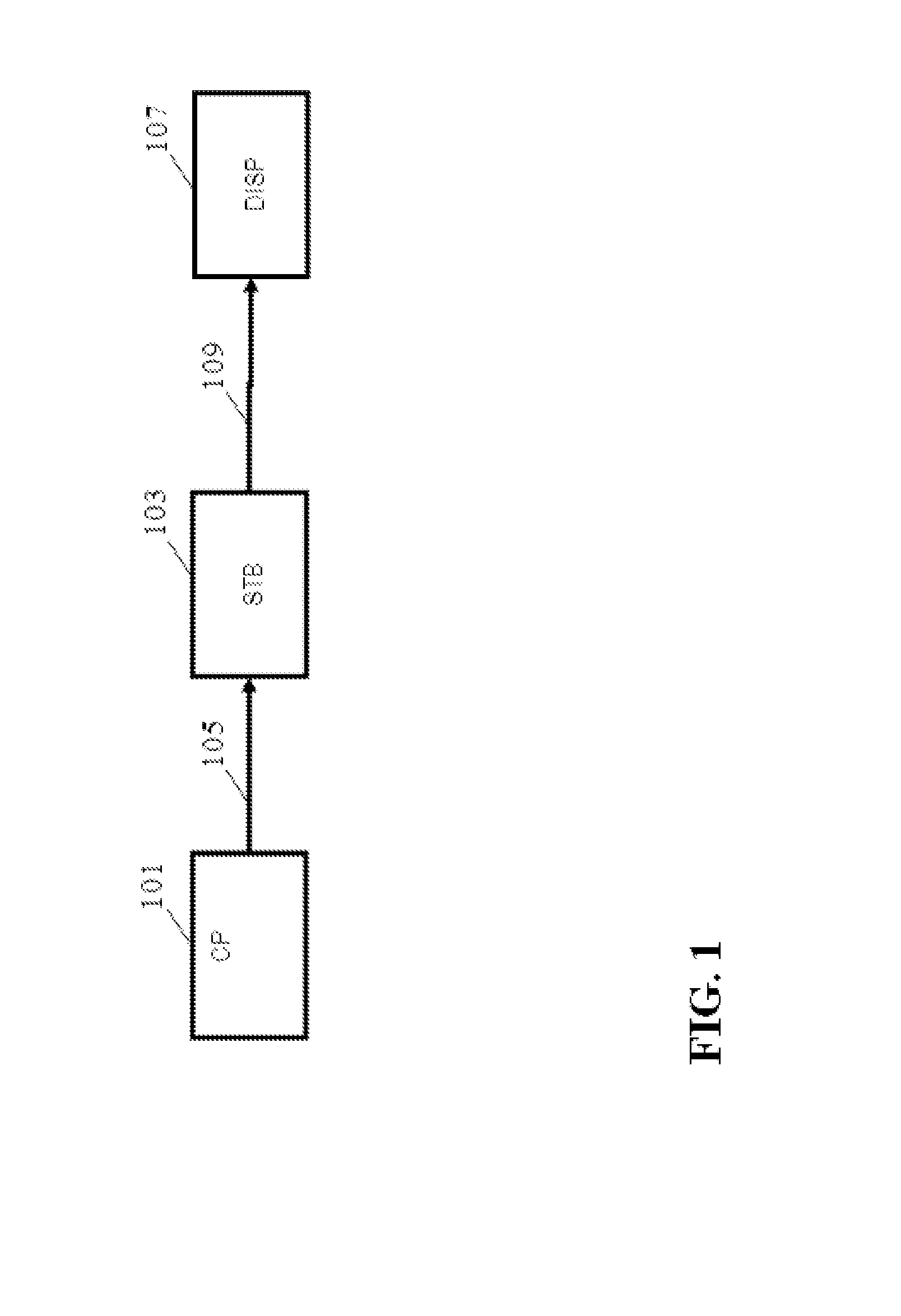Method and apparatus for generating an image coding signal
- Summary
- Abstract
- Description
- Claims
- Application Information
AI Technical Summary
Benefits of technology
Problems solved by technology
Method used
Image
Examples
Embodiment Construction
[0099]FIG. 1 illustrates an example of an audio visual distribution path. In the example, a content provider apparatus 101 generates an audio visual content signal for an audiovisual content item, such as e.g. a film, a television programme etc. The content provider apparatus 101 may specifically encode the audiovisual content in accordance with a suitable encoding format and colour representation. In particular, the content provider apparatus 101 may encode the images of a video sequence of the audiovisual content item in accordance with a suitable representation such as e.g. YCrCb. The content provider apparatus 101 may be present at a site of a production or distribution house that creates or broadcasts the content.
[0100]The audio visual content signal may be distributed to a content processing device 103 via a distribution path 105. The content processing device 103 may for example be a set-top box residing with a specific consumer of the content item (the settopbox may have sig...
PUM
 Login to View More
Login to View More Abstract
Description
Claims
Application Information
 Login to View More
Login to View More - R&D
- Intellectual Property
- Life Sciences
- Materials
- Tech Scout
- Unparalleled Data Quality
- Higher Quality Content
- 60% Fewer Hallucinations
Browse by: Latest US Patents, China's latest patents, Technical Efficacy Thesaurus, Application Domain, Technology Topic, Popular Technical Reports.
© 2025 PatSnap. All rights reserved.Legal|Privacy policy|Modern Slavery Act Transparency Statement|Sitemap|About US| Contact US: help@patsnap.com



